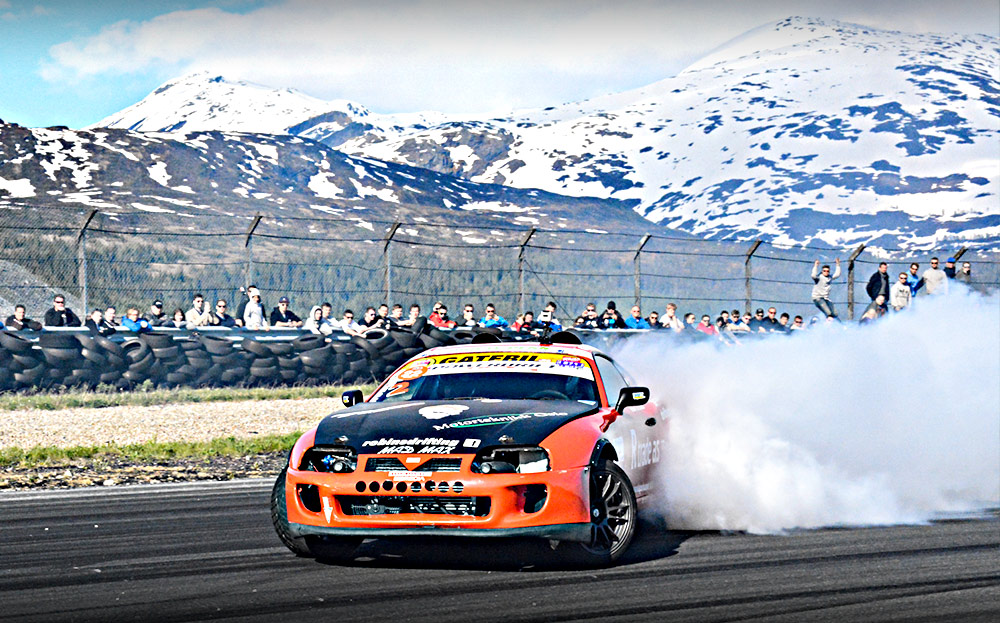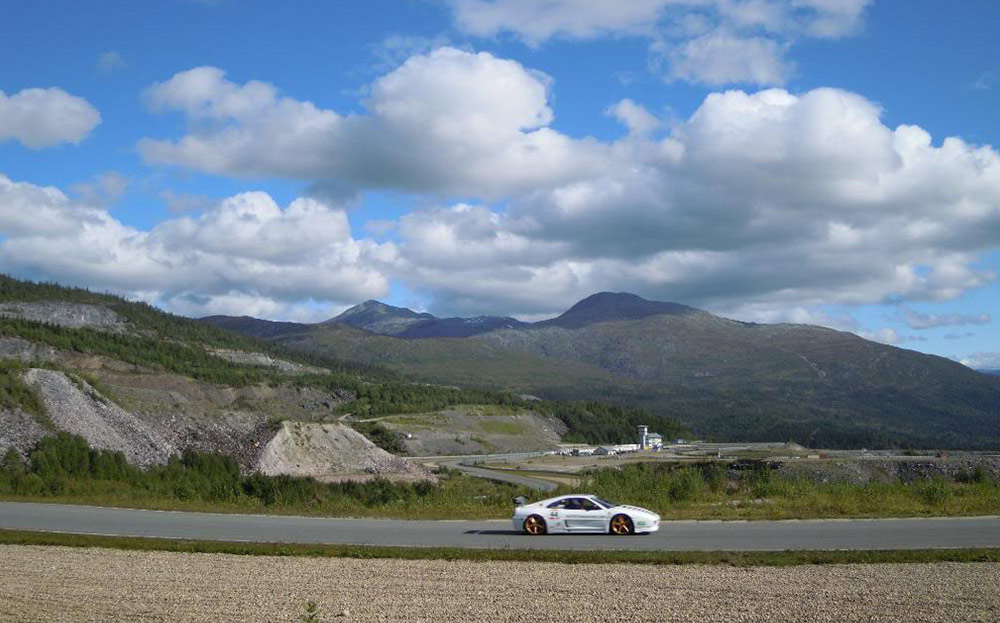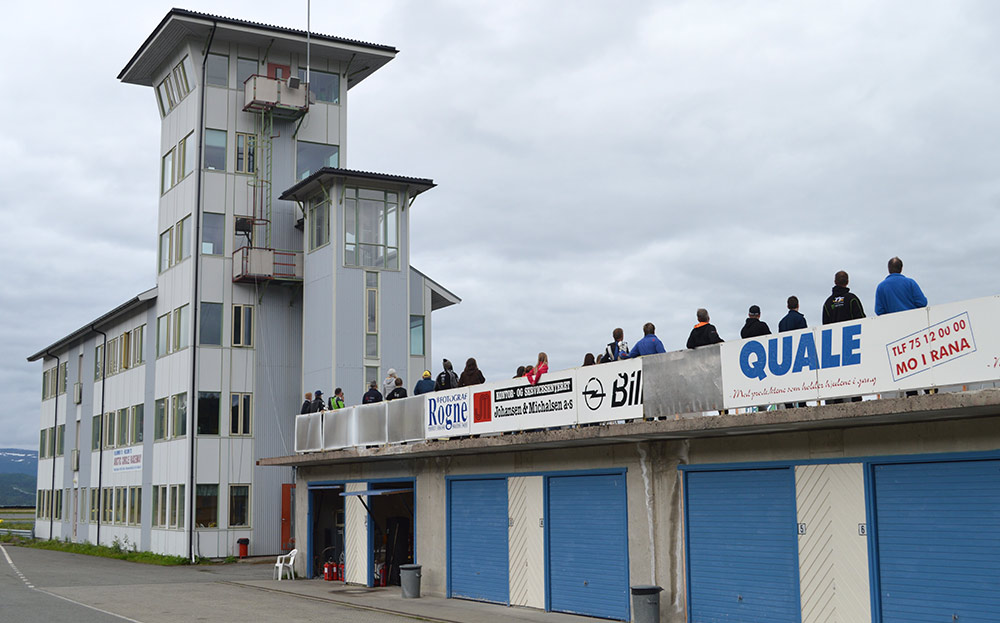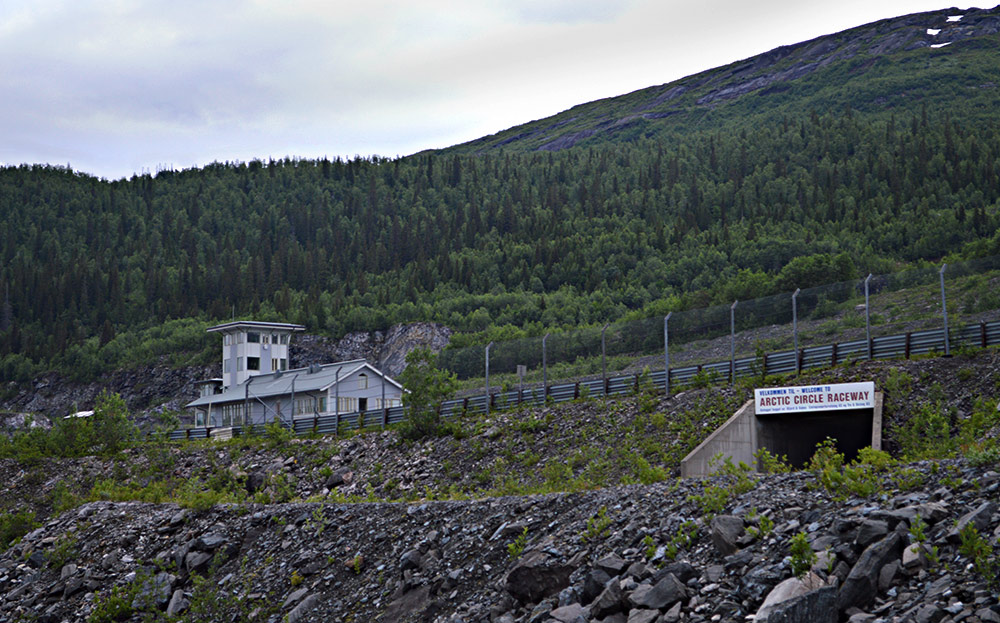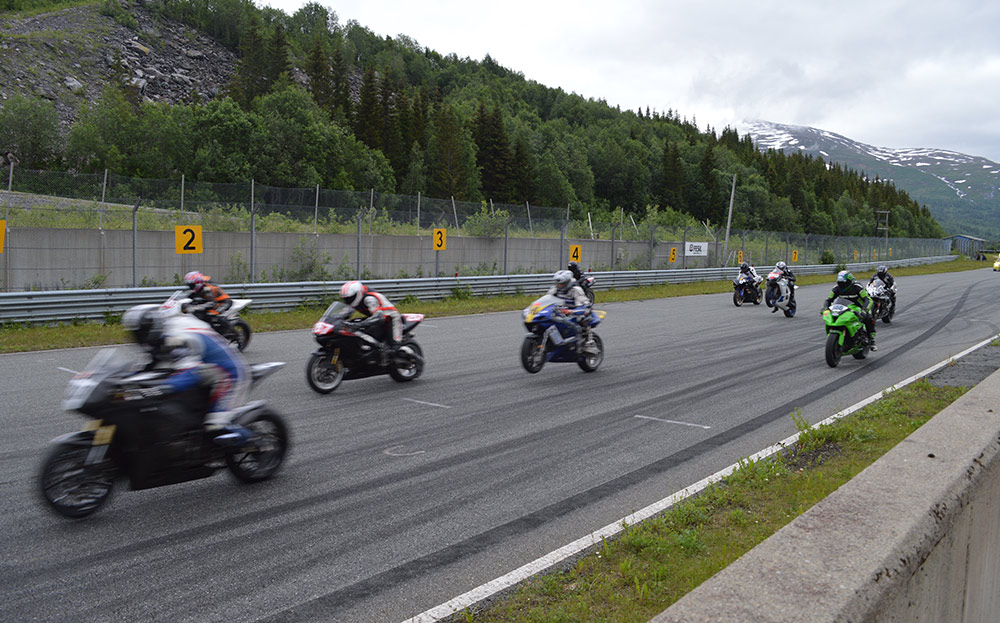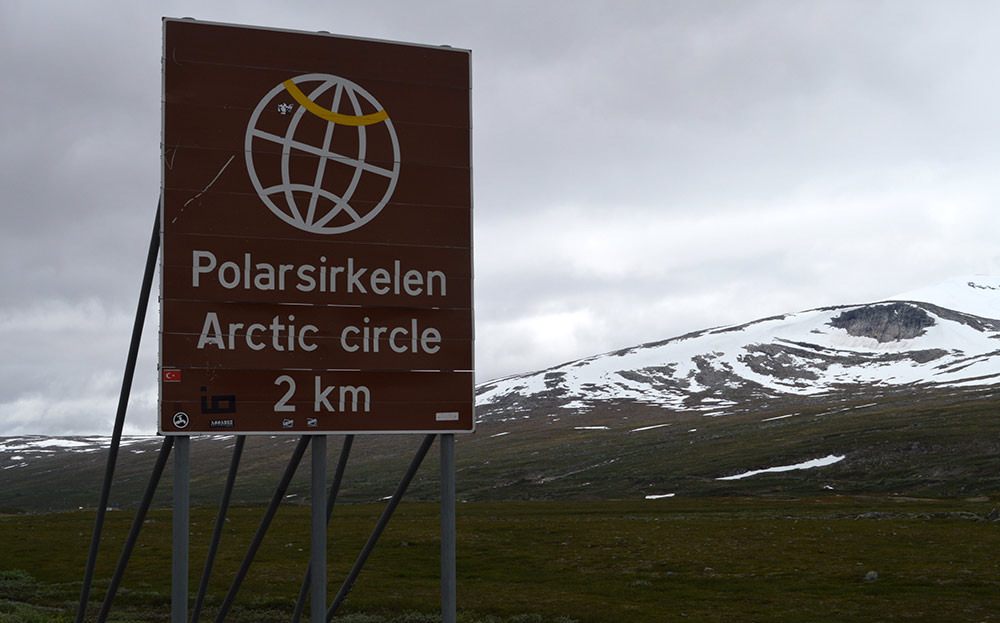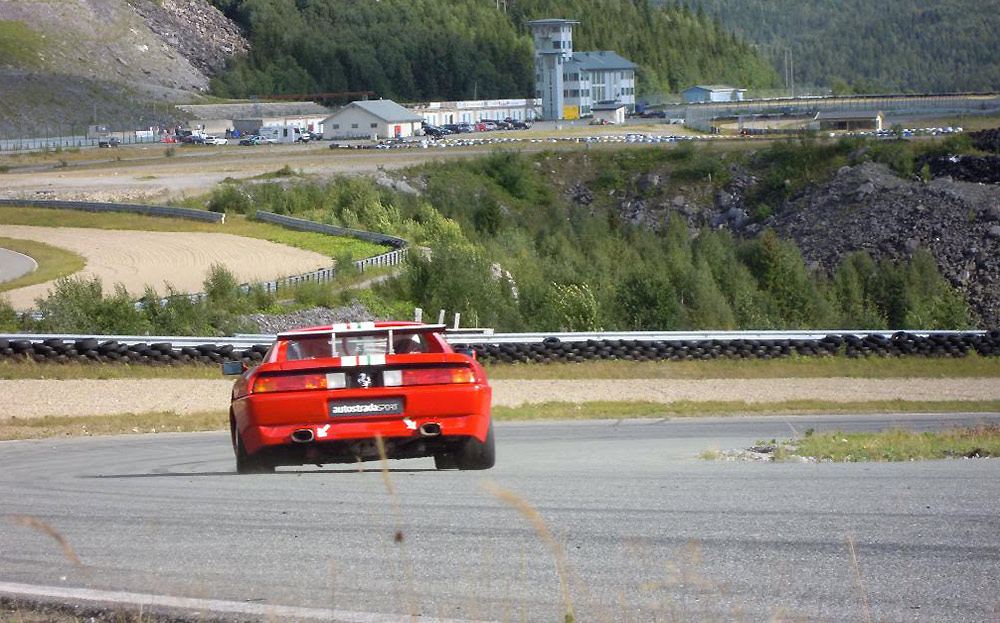Arctic Circle Raceway: the circuit at the end of the world
The curious story of the northernmost racetrack on Earth
THERE’S A sense of blissful isolation to the E6 highway in northern Norway, as it weaves through verdant forest, revealing lakes, rivers and backdrops of mountains with clouds billowing at their peaks.
It’s summertime but as I cruise along, save for a motorhome or two there’s barely a vehicle on the road. In Nordland county, just seven people reside in each square kilometre, so meeting anyone else is unlikely.
Near the village of Storforshei, 15km south of the polar circle, I see signs for the Arctic Circle Raceway – a track as remote as it is incongruous. I reach the turning and head off down a narrow lane arriving at an unstaffed barrier beside a deep quarry pit, giving the impression of a spy base.
Browse NEW or USED cars for sale on driving.co.uk
Just up ahead, motorbikes are screeching around a track ensconced by trees and steep banks, the noise reverberating all around.
Norway’s biggest racetrack – and the northernmost asphalted circuit in the world – was built to international acclaim in the late-1990s. It’s also the only such circuit where you can race with 24 hours of daylight during summer.
From the control tower, the views of the mountains and forested hillsides are outstanding but more so is the 3,753m-long track – slightly longer than Monte-Carlo – a modern, flowing circuit with 13 bends and corners, a 493m straight and an elevation change of 31m. It was built in 1995 at a cost of 70m krone (£5.9m).
Constructed on land reclaimed from an iron-ore mine that has its roots in Thomas Edison’s exploration company, the ACR today hosts biking events like the Norwegian road racing championship and, for cars, an unofficial drifting cup.
“It was different parts – Silverstone, the Nürburgring, Hockenheim, Paul Ricard. We took the best from many tracks and put them together”
It’s a labour of love for CEO Geir Lilletvedt, a former ice speedway racer turned lawyer for the Norwegian Motorsport Federation. We meet him fresh from the kitchen where he has been cooking for 40 people.
“I’m not a chef,” he says, mopping his brow. “I’m president of the board and CEO and I am cooking.” Lilletvedt is so passionate about the track he even sleeps there on a mattress during the short season – just three months – clearing snow away as late as June.
There are a mere five workers here, but about 100 volunteers turn up for big events. Lilletvedt is hiring a chef too.
“At the drifting, we have about 5,000 people and for the road racing between 500 and 1,000 spectators,” says Lilletvedt. They come from all over Norway but also from Sweden as the border is close by.
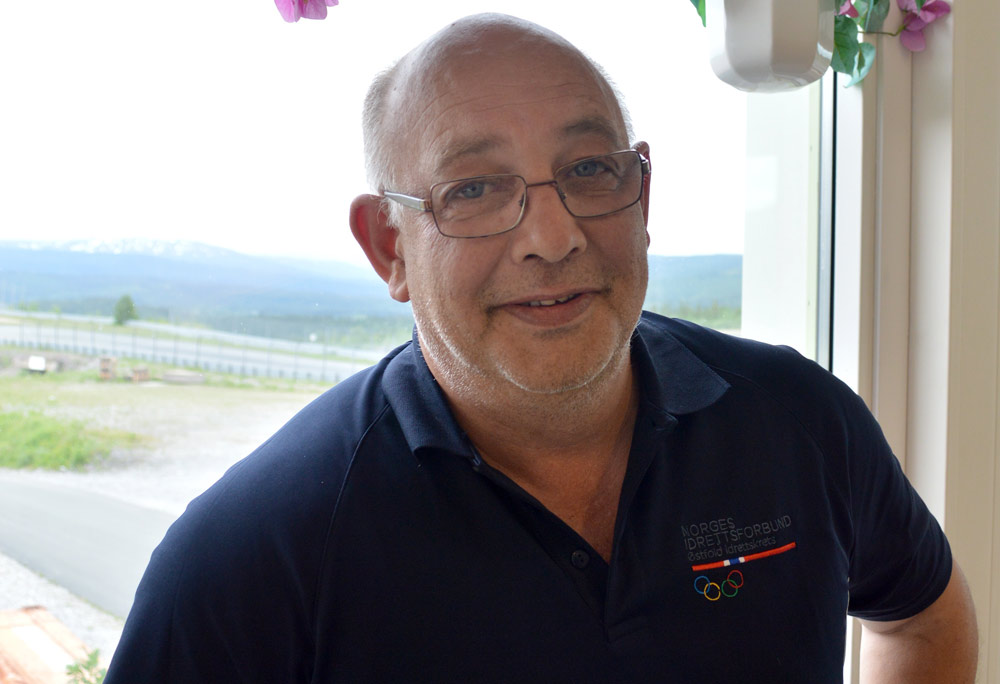
Geir Lilletvedt [Credit: James Williams]
It’s a 13-hour drive from Oslo, and 30-minutes from the nearest major town, Mo i Rana, which could explain how the ACR missed out on the limelight. It perhaps explains why the biggest hit so far has been hosting a stage of the Swedish Touring Car Championship on a few occasions between 1999 and 2004, drawing crowds of up to 20,000 people. But then that wasn’t always the plan.
Lilletvedt’s bosses at the NMF took over the track in 2003, buying it for 1 krone together with significant debts. The ACR had struggled to make an impact, despite overcoming the odds to secure private and local authority backing during its inception.
Its founder, Øystein Bentzen, left the ACR in 1996 just six months after opening – partly due to disagreement over its direction. Yet it was a dream that had begun at his racing club in the mid-1980s, when Norway had no racetracks at all, except for those laid out on gravel or frozen lakes. But rather than hire a top designer, he and his friends travelled around Europe trying out the best circuits for themselves.
“It was different parts – Silverstone, the Nürburgring, Hockenheim, Paul Ricard. We took the best from many tracks and put them together,” explains Bentzen, when we catch up later.
His goal was finally achieved in August 1995, when Le Mans race director Marcel Martin waved the chequered flag at the first car race at the ACR. It heralded a new era in Norwegian motor sport.
From early on, Bentzen decided not to play at the high-stakes Formula One table, instead aiming to attract a Nordic-level competition for cars and an international road racing championship for bikes. But despite gaining certification, a global biking event has thus far proved elusive.
“Despite his son coming off and being rushed to hospital earlier today, Øyvind Storli is raring to go and is taking his 1,000cc bike onto the starting grid”
There are private rentals, track days and go-karts, even a bit of snowmobiling in winter. For the riders and drivers who use the track, the passion burns bright. Locals like Øyvind Storli, who races bikes in his spare time with his son and daughter.
Despite his son coming off and being rushed to hospital earlier today, he’s raring to go and is taking his 1,000cc bike onto the starting grid.
These enthusiasts are joined occasionally by sporting celebrities, such as Formula Drift world champion Fredric Aasbø. “It’s probably one of the best tracks I’ve ever been on,” says the Norwegian. “It’s a fantastic track for drifting, with a good combination of really long sweeping turns along with beautiful scenery. Its pretty unique.
“It’s very iconic being up there, and when you drift midsummer there’s still snow on the mountain surrounding the track.”
It continues to draw the attention of many a curious visitor. “The competitor programme to Top Gear in Britain called me four or five years ago,” says Lilletvedt. “They wanted to come here and drive with a long-spike car. Something special. I had told them I will have to build ice around the track. The cost was no problem.
“But when they told me the spikes were so long, I said no because the asphalt can’t live with the damage. This asphalt has not been renewed for 20 years but it’s in very good shape.”
Now that the debts are paid off, the plan is to reinvigorate the raceway and its facilities, and repairs are underway throughout.
“It’s more like a devil got into me that things should go well for the track,” says Lilletvedt, before returning to the kitchen to finish his salmon with dill and potatoes.
From the tower, I watch as the band of 16 riders screech around North Pole corner, watched by friends who throng the roof of the garages.
Evening has drawn in but the Arctic Circle sun shows no sign of retiring, and the roar of the bikes keeps on going.


